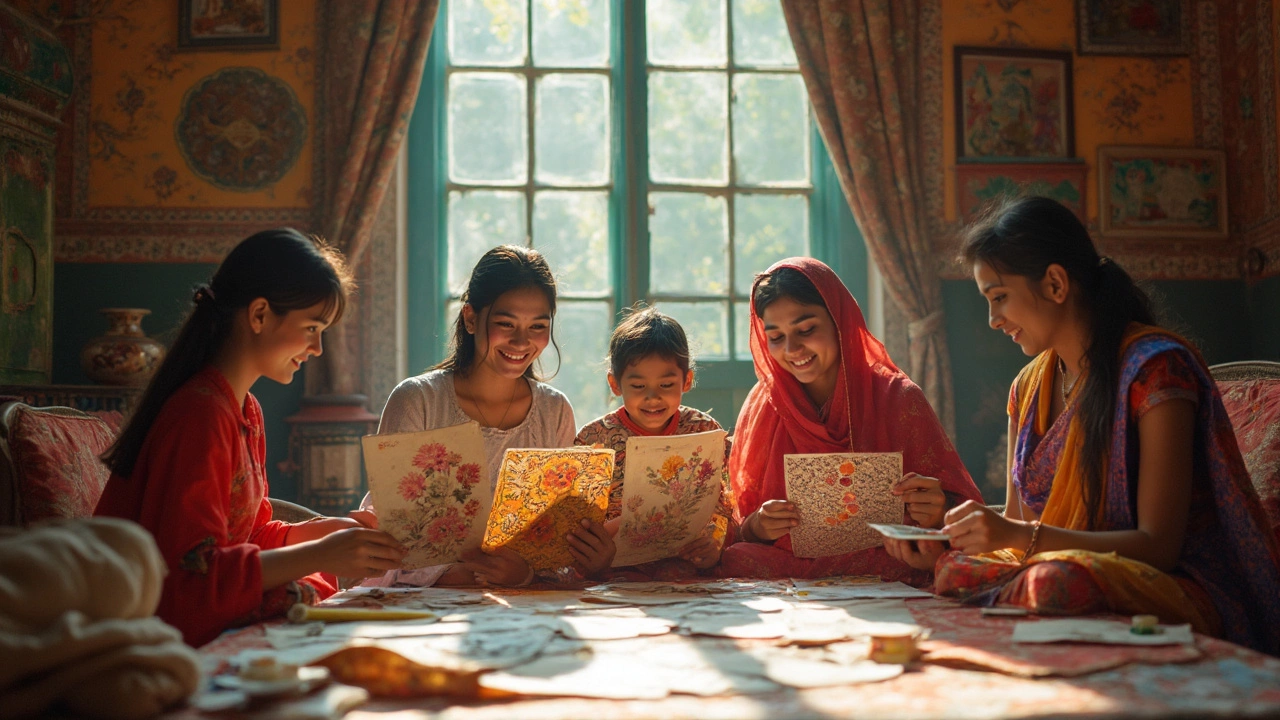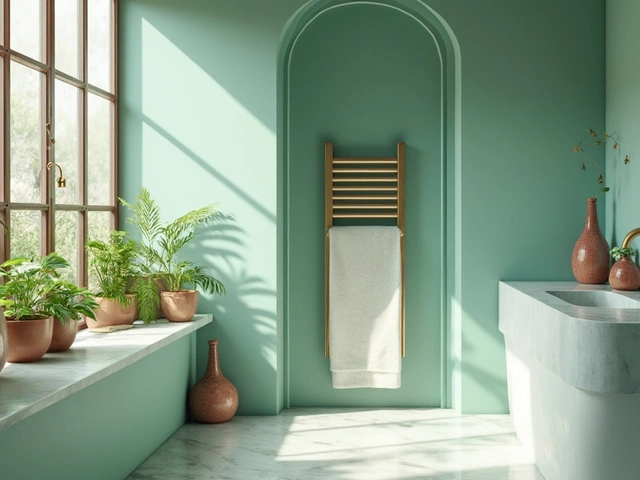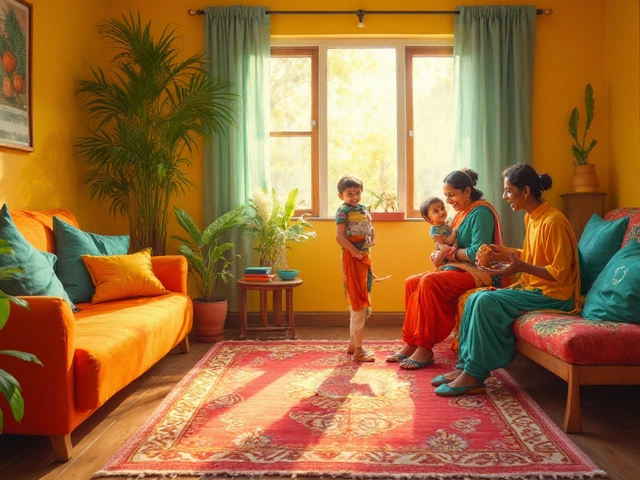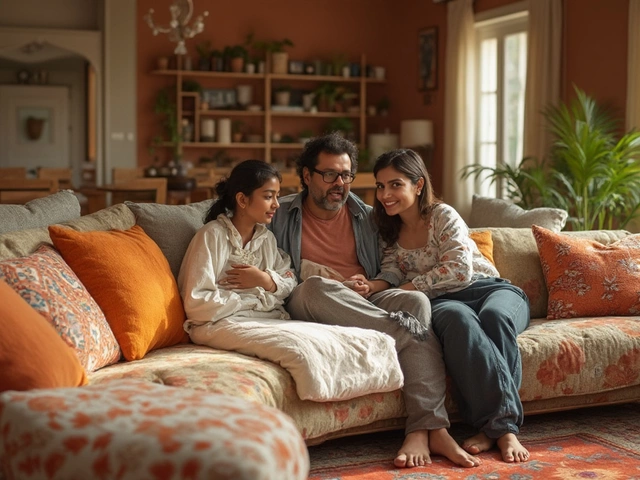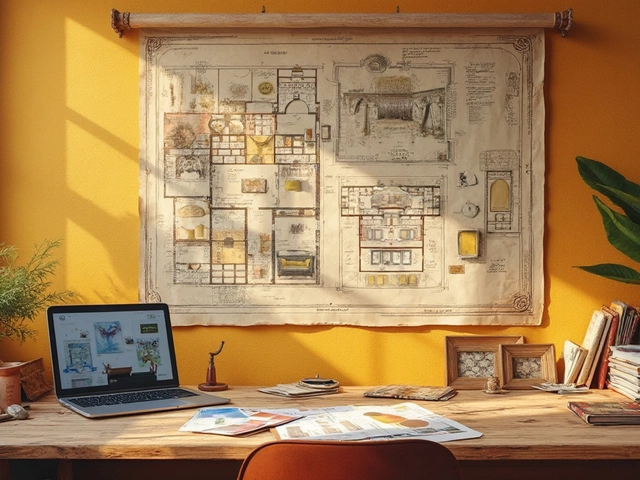Ever thought about wallpapering your entire house? Before you get those creative juices flowing, there's something you should know. While wallpaper can be a stunning addition to many spaces, not every room is a match made in heaven. Curious to know which ones? Let's talk about it.
First up, rooms with high humidity levels pose a problem. I'm looking at you, bathrooms! Unless you've got top-notch ventilation, most wallpapers won't hold up well in all that moisture. Instead, consider using tiles or bathroom-resistant paints.
Got a space that sees a lot of wear and tear? Think hallways and entryways. These areas might show signs of damage over time. If you're set on adding some flair, opt for vinyl or other hardy materials designed to withstand frequent use.
- Rooms to Avoid Wallpapering
- Why Humidity Is a Wallpaper's Enemy
- High-Traffic Areas and Wallpaper Longevity
- The Impact of Direct Sunlight on Wallpaper
- Choosing the Right Wallpaper for Each Room
- Alternative Ideas for Challenging Spaces
Rooms to Avoid Wallpapering
So, you’re ready to dive into the world of wallpaper trends, but did you know that some rooms might not be the best candidates for those fabulous patterns and textures? Let’s explore where wallpaper might not just fit the vibe.
Bathrooms
First on the list, we have bathrooms. Why's that? Well, bathrooms, especially those without proper ventilation, tend to have high humidity. Moisture can loosen the adhesive or cause the paper to peel. No one wants to invest time and money only to see all that beautiful home decor come undone, right?
High-Heat Kitchens
Next up, kitchens that are high-heat zones. Cooking produces steam and grease that can degrade wallpaper. If you just can't resist the look, consider backsplash tiles or vinyl options that are easier to clean and maintain.
Rooms with Direct Sunlight
If a room bathes in sunlight for most of the day, you might face discoloration issues with your interior design. Sunlight can bleach the colors, leaving certain patches faded over time. If you still want a splash of wallpaper in these spaces, choose lighter shades or patterns that are less likely to show fading.
High-Traffic Areas
Think about those hallways and staircases that see a lot of action throughout the day. While they could benefit from the personalization wallpapers offer, constant brushing against them can cause wear and tear, especially if you've got kids or pets in the house. Consider saving your wallpapering skills for a less trafficked area, or select durable materials.
Not deterred? There's always the exception to the rule. Special types of wallpapers like PVC coatings or fibreglass are made for these challenging spots, offering a more resilient option for budding decorators.
Remember, the key is to match the type of wallpaper to the demands of the room. Choose wisely, and your house’s personality will shine without any hiccups!
Why Humidity Is a Wallpaper's Enemy
Humidity and wallpaper are like oil and water—they just don't mix well. Here's why: Moisture in the air can wreak havoc on wallpaper, causing it to peel, bubble, and lose its stick, all of which can make your walls look shabby instead of chic.
Bathrooms and kitchens are notorious for high humidity levels, thanks to steamy showers and boiling pots of water. If you're committed to adding a splash of pattern to these spaces, you'll need to choose your materials wisely.
How Humidity Affects Wallpaper Adhesion
Excess moisture can compromise the adhesive used to attach wallpaper to your walls. Over time, this leads to unsightly wrinkles, seams that come apart, and even full-blown detachment. In high-humidity areas, opting for a home decor solution that's designed to handle moisture is your best bet.
Smart Alternatives for Humid Spaces
Here are some tips for getting that stylish look without the risk of peeling:
- Vinyl Wallpaper: Crafted to withstand humidity, vinyl is your friend here. It's fairly durable and can be easily wiped clean. Perfect for bathrooms and kitchens.
- Bathroom-Grade Paint: If you're not sold on vinyl, special paints for bathrooms can also do the trick. They resist moisture and mold, making them ideal for keeping walls pristine.
- Tiles: An all-time favorite in bathrooms, tiles can give you the texture and color range wallpaper offers, without the hassle of peeling and bubbling.
What's a good idea, you ask? Consider using wallpaper in the upper half of the walls or on the ceiling where it's less likely to encounter steam directly. This way, you get the look without the constant fear of damage.
High-Traffic Areas and Wallpaper Longevity
When it comes to keeping your wallpaper looking fresh and stylish, the amount of foot traffic a room experiences is something you can't ignore. High-traffic areas in your home, like hallways, entryways, and perhaps even some living spaces, face more wear and tear than other rooms.
These zones are constantly subjected to touches, scrapes, and possible knocks. So, what does that mean for your wallpaper plans? It means you need to think about durability just as much as style.
Factors Affecting Longevity
In high-traffic areas, wallpaper longevity is about three key things: material, installation, and maintenance. Some materials stand up to the hustle and bustle better than others. Choosing vinyl or fabric-backed wallpaper can often provide the durability you need in these busy spaces.
- Material: Vinyl wallpapers are not only durable, but they're also relatively easy to clean. This makes them a top pick for areas that experience a lot of action.
- Installation: Proper installation is equally important. Ill-fitting wallpaper can peel at the seams when tugged or bumped frequently.
- Maintenance: Regular maintenance will keep your wallpaper in good shape. Gentle cleaning—using a mild detergent and a soft cloth—can help remove marks and smudges.
Style Without Compromise
Just because an area is high-traffic doesn't mean you have to compromise on style. Clever pattern choices can also disguise potential blemishes. Larger, eye-catching patterns are excellent for hiding minor imperfections.
Feeling statistical? Check out the durability comparison in the table below, highlighting why certain wallpaper types might be best for areas that see a lot of movement.
| Wallpaper Type | Ideal Applications | Durability |
|---|---|---|
| Vinyl | High-traffic areas | Excellent |
| Foil | Accent walls | Moderate |
| Grasscloth | Low-traffic rooms | Poor |
Choosing the right wallpaper for high-traffic areas doesn’t only preserve the room's look, but also the investment you made in the first place!
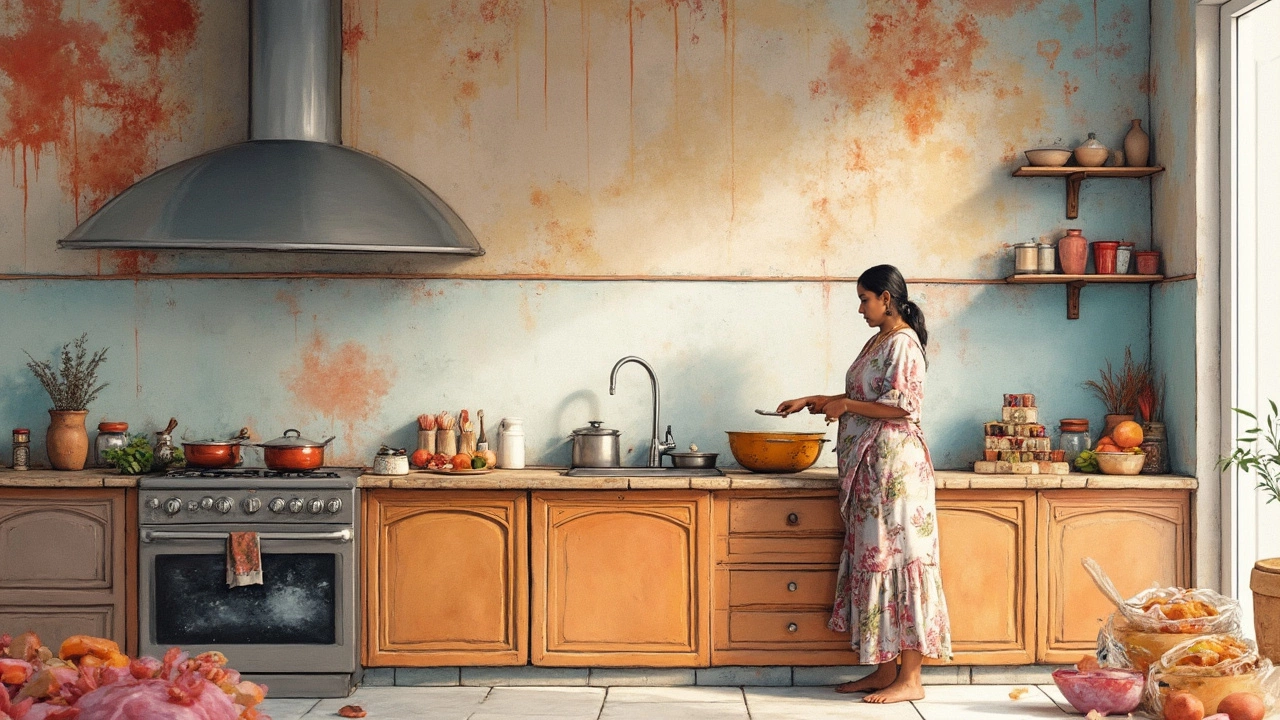
The Impact of Direct Sunlight on Wallpaper
Direct sunlight can be a game's changing factor when it comes to wallpaper durability and appearance. If you're planning to adorn a sun-drenched room with stylish wallpaper, here's what you need to know.
The Fading Game
Wallpapers exposed to a lot of sunlight tend to fade over time. This discoloration can dull even the most vibrant designs, leaving your once-stylish room looking tired and worn-out. It's especially true for brightly colored or patterned papers. If your room gets a lot of sunlight, consider using wallpapers made from fade-resistant materials.
Material Matters
When it comes to resisting the sun, not all wallpapers are created equal. Vinyl-coated wallpapers tend to perform better than paper-based ones in bright rooms. You'll also find some wallpapers specifically rated for lightfastness, meaning they're designed to resist fading in the sun.
According to Sarah Robinson, an interior design expert at House Beautiful, "Choosing lightfast wallpaper is essential for sunlit rooms, as it maintains its vibrancy and minimizes fading over time."
What You Can Do
- Opt for lighter shades: These tend to resist fading better than dark colors.
- Strategic placement: If you're in love with a particular design, use it on walls less exposed to sunlight.
- Window treatments: Consider adding blinds or curtains to protect your wallpaper from direct sunlight.
If you're a fan of powerful sun rays streaming into your rooms but still want trendy wallpaper, a bit of planning can go a long way in keeping your interiors crisp and colorful for years to come.
Choosing the Right Wallpaper for Each Room
Picking the perfect wallpaper for each room can transform your home, but it’s not a one-size-fits-all situation. Consider each room's unique environment and purpose before you make a decision.
Living Room
The living room is your canvas for creativity. It’s where you entertain guests, so make it bold or subtle, depending on your style. Large prints are trendy and add character, but if your space is smaller, opt for lighter colors to open up the room.
Bedroom
Your bedroom is your sanctuary. Here, calming patterns like soft florals or pastels work wonders. These choices make the space feel restful, which is exactly what you need. For a modern twist, feature walls in deep tones can add a cozy vibe.
Kitchen
In the kitchen, durability is key. Given it's a splash-prone area, washable and moisture-resistant wallpaper is essential. Patterns like quirky tiles or fruits can add a playful touch while being practical.
Home Office
When it comes to your home office, think productivity. Subtle stripes or neat geometric patterns provide a backdrop that doesn’t distract. Earthy tones can create a grounded and focused environment, perfect for concentrating on work.
Remember, the interior design of your home should reflect your tastes while being practical for each specific room. With these tips, you’ll be well on your way to a stylish and cohesive home decor that suits every space.
Alternative Ideas for Challenging Spaces
Not every room is the perfect canvas for wallpaper trends. What can you do if you've got a room that's wallpaper-challenged? There are plenty of other ways to bring life to those tricky spaces.
Consider Paint with Patterns
Instead of traditional wallpaper, you can use paint to create your own patterns. Paints come in thousands of shades, and with a bit of creativity, you can create stripes, polka dots, or geometric designs that give the same depth as wallpaper.
Stencils: The DIY Hero
Stencils are a great alternative if you're looking for precision without the fuss of wallpaper. Available in lots of designs, they can be a budget-friendly way to apply designs with paint, customizing them to fit your room’s theme.
Peel-and-Stick Decals
If you’re not ready to commit or are renting, peel-and-stick decals are a modern interior design king. They're easy to apply and remove, which makes them a top choice for those unwilling or unable to fully commit to wallpaper.
Fabric Panels
Believe it or not, fabric panels can be a fresh alternative to wallpaper. A large piece of fabric stretched over a frame can act like a mural. Choose patterns or textures to create a unique feature wall that's both classy and temporary.
Wood and Natural Panels
Rustic charm can be achieved with reclaimed wood panels. They're a stylish pick for a room where wallpaper might not work. Natural materials can introduce warmth and texture, offering a different tactile experience altogether.
Remember, challenging spaces aren't the end of the road for your home decor plans. With a little creativity, you can achieve a look that’s both striking and practical.
